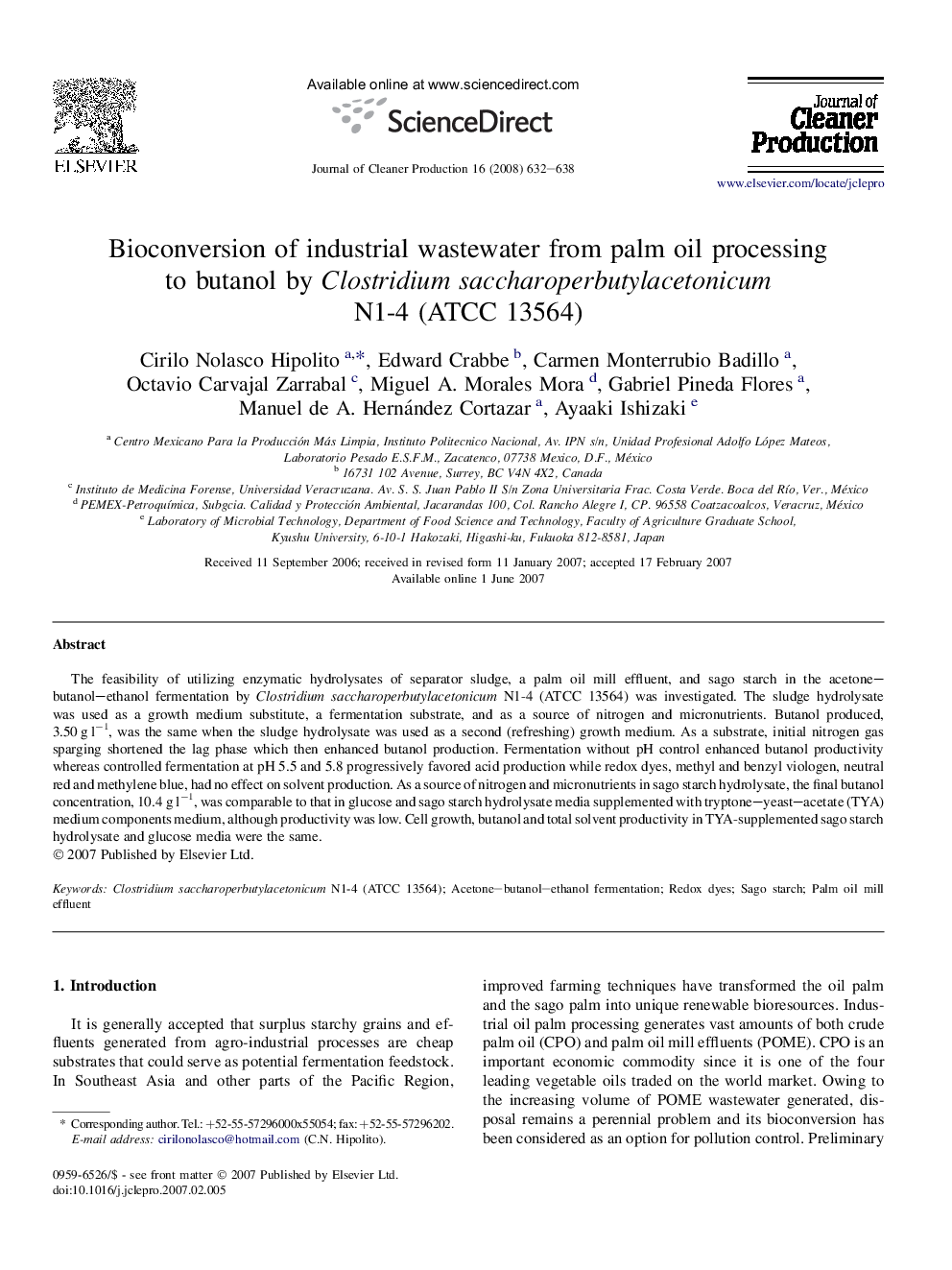| کد مقاله | کد نشریه | سال انتشار | مقاله انگلیسی | نسخه تمام متن |
|---|---|---|---|---|
| 1747133 | 1018151 | 2008 | 7 صفحه PDF | دانلود رایگان |

The feasibility of utilizing enzymatic hydrolysates of separator sludge, a palm oil mill effluent, and sago starch in the acetone–butanol–ethanol fermentation by Clostridium saccharoperbutylacetonicum N1-4 (ATCC 13564) was investigated. The sludge hydrolysate was used as a growth medium substitute, a fermentation substrate, and as a source of nitrogen and micronutrients. Butanol produced, 3.50 g l−1, was the same when the sludge hydrolysate was used as a second (refreshing) growth medium. As a substrate, initial nitrogen gas sparging shortened the lag phase which then enhanced butanol production. Fermentation without pH control enhanced butanol productivity whereas controlled fermentation at pH 5.5 and 5.8 progressively favored acid production while redox dyes, methyl and benzyl viologen, neutral red and methylene blue, had no effect on solvent production. As a source of nitrogen and micronutrients in sago starch hydrolysate, the final butanol concentration, 10.4 g l−1, was comparable to that in glucose and sago starch hydrolysate media supplemented with tryptone–yeast–acetate (TYA) medium components medium, although productivity was low. Cell growth, butanol and total solvent productivity in TYA-supplemented sago starch hydrolysate and glucose media were the same.
Journal: Journal of Cleaner Production - Volume 16, Issue 5, March 2008, Pages 632–638